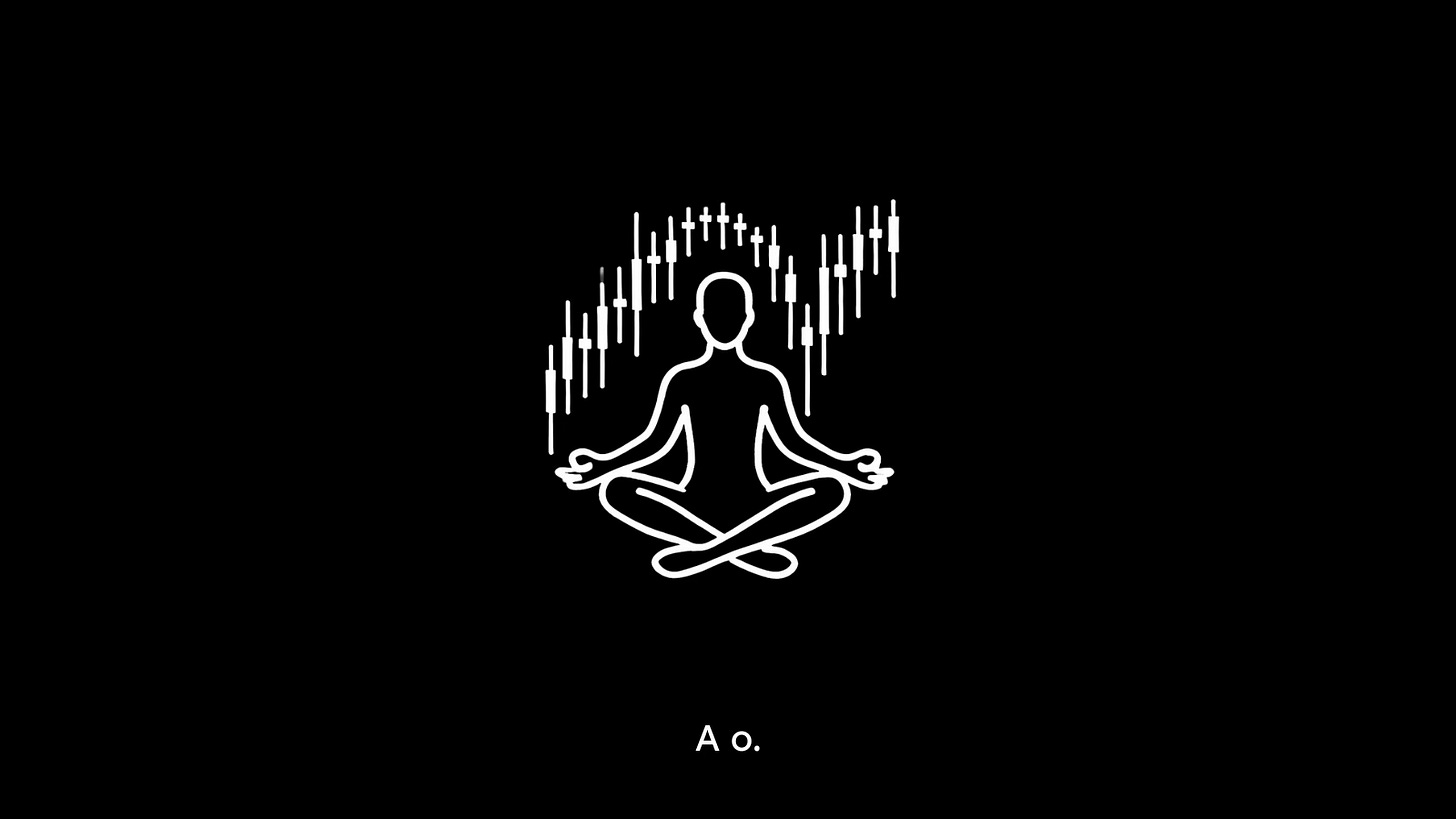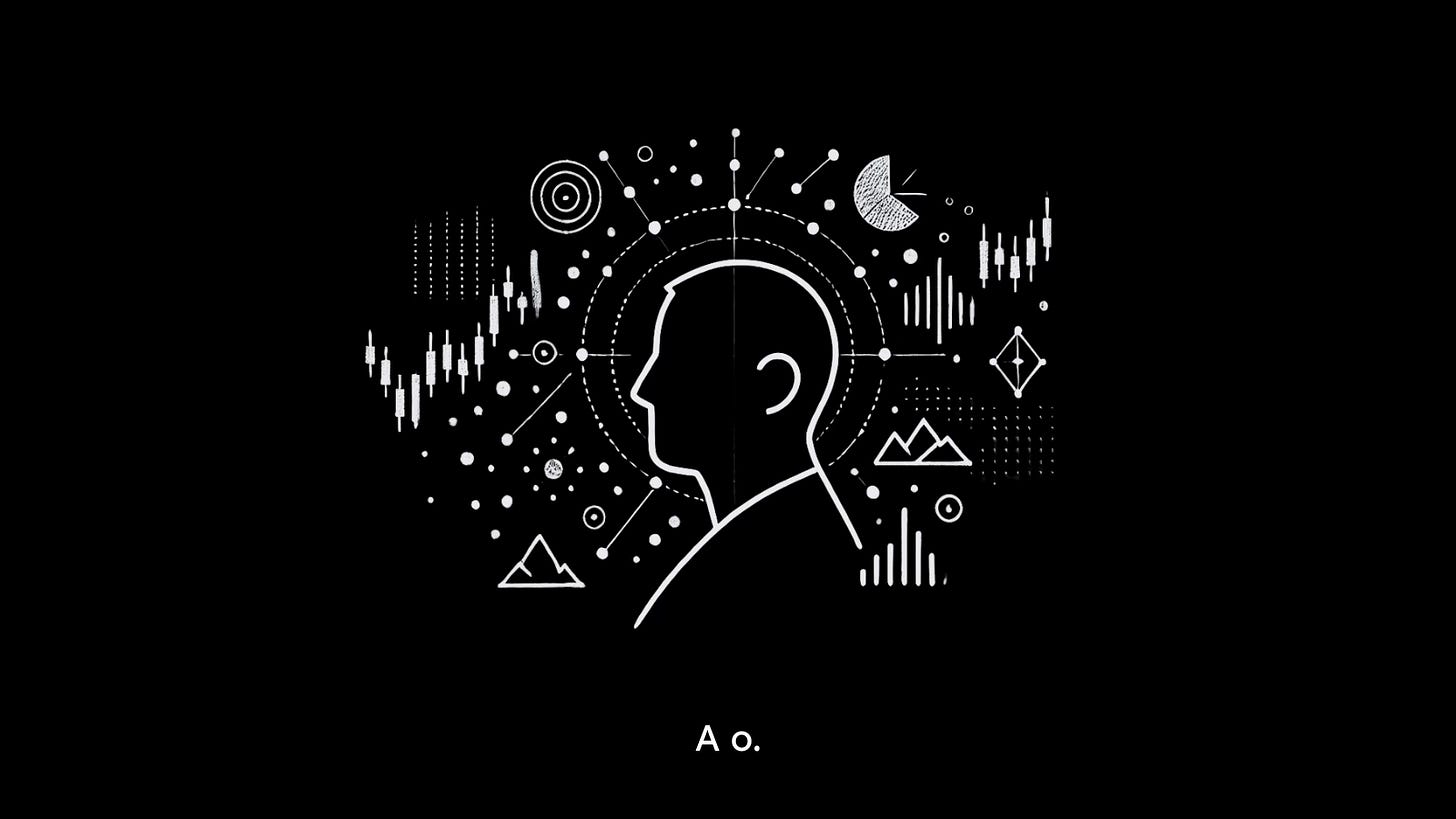Good afternoon family,
Hope you guys are all doing well, and having a good week so far. I have decided to drop these newsletters in a more sporadic manner. I think that works best with the readers as well, and also my own burst of creativity. It allows you to read it on your own time. instead of eagerly waiting for a release.
Without further ado, the 9th release of this newsletter will cover some ground on an interesting topic in relation to life and trading in general.
This isn’t another quick fix or hack. It’s not about buying the latest trading tool or finding a shortcut to success. This is about fundamentally reshaping how you perceive the world around you and, specifically, the trading world you engage with daily. I could have titled this message:
“How to Be Happy as a Trader”
“The Only Thing You Need to Succeed in Trading”
“How to Live, Trade, and Thrive”
This concept is crucial for navigating modern markets and life itself. Take your time to read through this, take notes, and practice. It took years for you to form your current trading mindset. It may take just as long—or a single moment of realization—to reshape it.
Understanding Conditioning
Let’s start by defining what “conditioning” really means. Think of the gym: when you go consistently, you’re conditioning your body through repetitive exercises, building muscle, endurance, and strength. But if you stop exercising, your body begins to deteriorate. The same principle applies to your mind and habits. You’re constantly conditioning yourself, whether consciously or not. You’re either growing or decaying—there’s no middle ground.
This kind of conditioning is why many traders feel trapped in cycles of overthinking, self-doubt, and impulsive decisions. The conditioning has created patterns, and these patterns shape how you interact with the market. But here’s the good news: just as you’ve been conditioned, you can also recondition yourself—consciously this time—to develop a mindset and habits that work for you, not against you.
Alan Watts on Overthinking and Illusion
To illustrate, here’s a relevant quote from Alan Watts:
“A person who thinks all the time has nothing to think about except thoughts. So, he loses touch with reality and lives in a world of illusions…”
When you overthink, you’re pulled away from the present moment, swept up in analysis paralysis. In trading, this can manifest as excessive analysis of charts, market data, and news, leading to decision fatigue and reactive trading. You’re no longer in touch with the reality of the market because you’re stuck in your head, tangled in a web of thoughts, fears, and hypothetical scenarios.
Cultural Conditioning of the Trader’s Mind
Just as society conditions you to chase material success, status, and external validation, trading culture can condition you to chase superficial metrics like profits, flashy wins, and “beating the market.” This conditioning fills your head with chatter—endless thoughts, beliefs, biases, ideologies, and projections—that blur your perception of what’s really happening in the markets. As a result, you may find yourself driven by ego, fear, greed, or a desperate need to prove something.
If we liken perception to a lens, conditioning is what blurs that lens, leaving you unable to see the markets clearly. As a child, you saw the world with curiosity, playfulness, and an open mind. In trading, this translates to a natural curiosity about the market, a sense of excitement, and a willingness to explore. But over time, conditioning can replace this openness with rigidity, cynicism, and a narrowed field of vision.
Perception vs. Reality in Trading
When you trade, you’re always working with two things: perception and reality. Perception is shaped by your personality, beliefs, biases, and the narratives you’ve picked up along the way. Reality, however, is what is—the objective, unbiased flow of the market. Success in trading comes from aligning perception with reality. The better you understand your own biases and conditioning, the more clearly you can see the market for what it truly is, rather than what you think it is.
There’s a constant dance between being and becoming. Who you think you are is not who you are. Who you are in the market is determined by how you act, not by the stories you tell yourself. This can be a tough pill to swallow, especially if you’ve built an identity around being “a great trader” or someone with an infallible strategy. But trading, like life, is an ongoing process, not a fixed destination.
Self-Actualization and Trading
Self-actualization means moving beyond the surface-level desires for wealth or success. It means becoming who you are, not who you think you should be. In trading, this looks like letting go of ego-driven goals and embracing a mindset focused on continuous learning, adaptation, and alignment with the market. The more you become aware of the gap between perception and reality, the more you can align yourself with the truth of the market.
But before you can reach this stage, you have to consciously condition yourself. Trading isn’t just about reading charts and crunching numbers. It’s about programming your mind to view the market through a lens that works for you, not against you. This is where Conscious Conditioning comes in. It’s about reprogramming your perception to cut through the noise, stay grounded, and focus on what matters.
Conscious Conditioning for Traders
This brings us to the Conscious Conditioning process—a six-step method for aligning your perception with market reality:
Pause
When an impulse strikes—whether it’s the urge to enter a trade or react to a sudden price movement—pause. Give yourself a moment to breathe. This disrupts the automatic reaction and brings you back to the present. Use anchors like taking a deep breath, stepping away from the screen, or briefly focusing on something unrelated. These anchors help you reset, preventing emotional responses from clouding your judgment.Question
Why do you want to make this trade? Is it based on sound analysis, or are you driven by fear or greed? By questioning your impulses, you can identify whether your perception aligns with reality. Ask yourself:What’s the real reason behind this trade?
Am I reacting to market noise, or do I see a genuine opportunity?
What’s the potential outcome of this action?
Writing these questions down can help you gain clarity and prevent impulsive decisions. Regular journaling is crucial for developing self-awareness in trading. It’s a way to externalize your thoughts, examine them, and identify patterns that you can either reinforce or reframe.
Objectify
Recognize that your thoughts, feelings, and impulses aren’t inherently “you.” They’re just reactions to external stimuli. By objectifying these thoughts, you separate yourself from them. This helps you see them as tools to be used or discarded, rather than parts of your identity. You’re not defined by your fears or losses; you’re the person observing them.Reframe
Take a negative impulse—like the fear of missing out on a trade—and reframe it into something constructive. For example, FOMO can be reframed as an opportunity to practice patience. Instead of seeing a missed trade as a loss, view it as a chance to observe market behavior and refine your strategy. Turning negatives into positives is a form of mental alchemy, and it can fundamentally shift how you interact with the market.Characterize
How does this reframe align with your trading goals? What actions can you take that reflect this new perspective? This is where you start embodying the traits of a disciplined, mindful trader. For example, you might decide to take a break when feeling overwhelmed or set specific criteria for entering trades to avoid impulsive decisions.Align
Revisit your overall trading goals and vision. Are your actions aligned with these objectives? By continually aligning your behavior with your long-term goals, you create a sense of inner coherence. This coherence translates into consistent actions, which are essential for long-term success in trading.
Mental Minimalism in Trading
Mental minimalism means clearing out the noise and focusing on what truly matters. In trading, this looks like stripping away distractions, unnecessary analysis, and reactive behaviors. The goal is to cultivate a clear, focused mindset that’s attuned to the reality of the market rather than clouded by excess information or fleeting emotions.
Imagine your mind as a clear lake: the less ripples and debris, the more you can see what lies beneath. By practicing conscious conditioning, you still the waters, allowing you to act with greater precision, intuition, and calm.
Balancing Thinking and Acting
Finally, there’s a balance between analysis and execution. Traders often get stuck in cycles of analysis paralysis, overthinking every move and losing touch with the market’s flow. Remember, thinking is a tool—it’s there to serve you, not to control you. Successful trading involves a balance between thoughtful analysis and intuitive action. Too much of either leads to suboptimal outcomes. By training yourself to pause, question, and act mindfully, you build a habit of making decisions that are informed but not overly analytical.
In trading, the goal is not to eliminate thinking but to make it a servant, not a master. This way, your perception aligns more closely with reality, bringing you closer to the elusive flow state where intuition and action merge seamlessly.
Through conscious conditioning, you shape your character into one that’s capable of both seeing the truth of the market and acting in alignment with it. This takes time, patience, and a commitment to self-awareness. But as you refine this process, you’ll find yourself not only becoming a better trader but also experiencing a deeper sense of fulfillment and clarity in all areas of life.
If you found this edition of my newsletter helpful, feel free to reply or share it on Twitter. Thank you for reading.
If you are ready to elevate your trading to the next level, you know exactly which door to go through…
( feel free to check out the details below and book a call with me to get acquainted )







As with all your previous content, I found this to be a very interesting and thought-provoking read. I truly appreciate your work, Max—you're in a league of your own. Keep grinding!